Visual or visual-tactile examination to detect and inform the diagnosis of enamel caries
- PMID: 34124773
- PMCID: PMC8428329
- DOI: 10.1002/14651858.CD014546
Visual or visual-tactile examination to detect and inform the diagnosis of enamel caries
Abstract
Background: The detection and diagnosis of caries at the initial (non-cavitated) and moderate (enamel) levels of severity is fundamental to achieving and maintaining good oral health and prevention of oral diseases. An increasing array of methods of early caries detection have been proposed that could potentially support traditional methods of detection and diagnosis. Earlier identification of disease could afford patients the opportunity of less invasive treatment with less destruction of tooth tissue, reduce the need for treatment with aerosol-generating procedures, and potentially result in a reduced cost of care to the patient and to healthcare services.
Objectives: To determine the diagnostic accuracy of different visual classification systems for the detection and diagnosis of non-cavitated coronal dental caries for different purposes (detection and diagnosis) and in different populations (children or adults).
Search methods: Cochrane Oral Health's Information Specialist undertook a search of the following databases: MEDLINE Ovid (1946 to 30 April 2020); Embase Ovid (1980 to 30 April 2020); US National Institutes of Health Ongoing Trials Register (ClinicalTrials.gov, to 30 April 2020); and the World Health Organization International Clinical Trials Registry Platform (to 30 April 2020). We studied reference lists as well as published systematic review articles.
Selection criteria: We included diagnostic accuracy study designs that compared a visual classification system (index test) with a reference standard (histology, excavation, radiographs). This included cross-sectional studies that evaluated the diagnostic accuracy of single index tests and studies that directly compared two or more index tests. Studies reporting at both the patient or tooth surface level were included. In vitro and in vivo studies were considered. Studies that explicitly recruited participants with caries into dentine or frank cavitation were excluded. We also excluded studies that artificially created carious lesions and those that used an index test during the excavation of dental caries to ascertain the optimum depth of excavation.
Data collection and analysis: We extracted data independently and in duplicate using a standardised data extraction and quality assessment form based on QUADAS-2 specific to the review context. Estimates of diagnostic accuracy were determined using the bivariate hierarchical method to produce summary points of sensitivity and specificity with 95% confidence intervals (CIs) and regions, and 95% prediction regions. The comparative accuracy of different classification systems was conducted based on indirect comparisons. Potential sources of heterogeneity were pre-specified and explored visually and more formally through meta-regression.
Main results: We included 71 datasets from 67 studies (48 completed in vitro) reporting a total of 19,590 tooth sites/surfaces. The most frequently reported classification systems were the International Caries Detection and Assessment System (ICDAS) (36 studies) and Ekstrand-Ricketts-Kidd (ERK) (15 studies). In reporting the results, no distinction was made between detection and diagnosis. Only two studies were at low risk of bias across all four domains, and 15 studies were at low concern for applicability across all three domains. The patient selection domain had the highest proportion of high risk of bias studies (49 studies). Four studies were assessed at high risk of bias for the index test domain, nine for the reference standard domain, and seven for the flow and timing domain. Due to the high number of studies on extracted teeth concerns regarding applicability were high for the patient selection and index test domains (49 and 46 studies respectively). Studies were synthesised using a hierarchical bivariate method for meta-analysis. There was substantial variability in the results of the individual studies: sensitivities ranged from 0.16 to 1.00 and specificities from 0 to 1.00. For all visual classification systems the estimated summary sensitivity and specificity point was 0.86 (95% CI 0.80 to 0.90) and 0.77 (95% CI 0.72 to 0.82) respectively, diagnostic odds ratio (DOR) 20.38 (95% CI 14.33 to 28.98). In a cohort of 1000 tooth surfaces with 28% prevalence of enamel caries, this would result in 40 being classified as disease free when enamel caries was truly present (false negatives), and 163 being classified as diseased in the absence of enamel caries (false positives). The addition of test type to the model did not result in any meaningful difference to the sensitivity or specificity estimates (Chi2(4) = 3.78, P = 0.44), nor did the addition of primary or permanent dentition (Chi2(2) = 0.90, P = 0.64). The variability of results could not be explained by tooth surface (occlusal or approximal), prevalence of dentinal caries in the sample, nor reference standard. Only one study intentionally included restored teeth in its sample and no studies reported the inclusion of sealants. We rated the certainty of the evidence as low, and downgraded two levels in total for risk of bias due to limitations in the design and conduct of the included studies, indirectness arising from the in vitro studies, and inconsistency of results.
Authors' conclusions: Whilst the confidence intervals for the summary points of the different visual classification systems indicated reasonable performance, they do not reflect the confidence that one can have in the accuracy of assessment using these systems due to the considerable unexplained heterogeneity evident across the studies. The prediction regions in which the sensitivity and specificity of a future study should lie are very broad, an important consideration when interpreting the results of this review. Should treatment be provided as a consequence of a false-positive result then this would be non-invasive, typically the application of fluoride varnish where it was not required, with low potential for an adverse event but healthcare resource and finance costs. Despite the robust methodology applied in this comprehensive review, the results should be interpreted with some caution due to shortcomings in the design and execution of many of the included studies. Studies to determine the diagnostic accuracy of methods to detect and diagnose caries in situ are particularly challenging. Wherever possible future studies should be carried out in a clinical setting, to provide a realistic assessment of performance within the oral cavity with the challenges of plaque, tooth staining, and restorations, and consider methods to minimise bias arising from the use of imperfect reference standards in clinical studies.
Copyright © 2021 The Cochrane Collaboration. Published by John Wiley & Sons, Ltd.
Conflict of interest statement
Richard Macey: none known. Tanya Walsh: none known. I am Senior Statistical Editor with Cochrane Oral Health. Philip Riley: none known. I am Deputy Co‐ordinating Editor of Cochrane Oral Health. Anne‐Marie Glenny: none known. I am Co‐ordinating Editor of Cochrane Oral Health. Helen V Worthington: none know. I am Statistical Editor with Cochrane Oral Health. Lucy O'Malley: none known. I am Editor with Cochrane Oral Health. Janet E Clarkson: none known. I am Co‐ordinating Editor of Cochrane Oral Health. David Ricketts: none known.
Figures
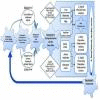
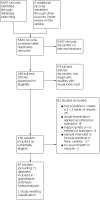



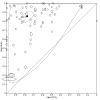
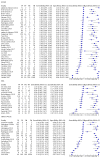

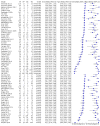
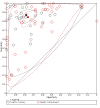
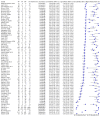
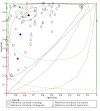
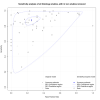
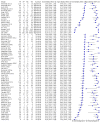

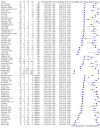
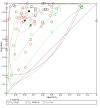
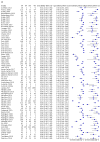



Similar articles
-
Imaging modalities to inform the detection and diagnosis of early caries.Cochrane Database Syst Rev. 2021 Mar 15;3(3):CD014545. doi: 10.1002/14651858.CD014545. Cochrane Database Syst Rev. 2021. PMID: 33720395 Free PMC article.
-
Transillumination and optical coherence tomography for the detection and diagnosis of enamel caries.Cochrane Database Syst Rev. 2021 Jan 27;1(1):CD013855. doi: 10.1002/14651858.CD013855. Cochrane Database Syst Rev. 2021. PMID: 33502759 Free PMC article.
-
Electrical conductance for the detection of dental caries.Cochrane Database Syst Rev. 2021 Mar 16;3(3):CD014547. doi: 10.1002/14651858.CD014547. Cochrane Database Syst Rev. 2021. PMID: 33724442 Free PMC article.
-
Fluorescence devices for the detection of dental caries.Cochrane Database Syst Rev. 2020 Dec 8;12(12):CD013811. doi: 10.1002/14651858.CD013811. Cochrane Database Syst Rev. 2020. PMID: 33319353 Free PMC article.
-
Tests to detect and inform the diagnosis of root caries.Cochrane Database Syst Rev. 2020 Dec 7;12(12):CD013806. doi: 10.1002/14651858.CD013806. Cochrane Database Syst Rev. 2020. PMID: 33284484 Free PMC article.
Cited by
-
Caries lesions diagnosis with deep convolutional neural network in intraoral QLF images by handheld device.BMC Oral Health. 2024 Jun 29;24(1):754. doi: 10.1186/s12903-024-04517-x. BMC Oral Health. 2024. PMID: 38951770 Free PMC article.
-
Detection of proximal dental caries in primary teeth with a near-infrared-irradiation-assisted intraoral scanner: an in vitro study.BMC Oral Health. 2025 Feb 20;25(1):270. doi: 10.1186/s12903-025-05629-8. BMC Oral Health. 2025. PMID: 39979907 Free PMC article.
-
Caries Detection and Classification in Photographs Using an Artificial Intelligence-Based Model-An External Validation Study.Diagnostics (Basel). 2024 Oct 14;14(20):2281. doi: 10.3390/diagnostics14202281. Diagnostics (Basel). 2024. PMID: 39451605 Free PMC article.
-
Diagnostic performance of artificial intelligence-aided caries detection on bitewing radiographs: a systematic review and meta-analysis.Jpn Dent Sci Rev. 2024 Dec;60:128-136. doi: 10.1016/j.jdsr.2024.02.001. Epub 2024 Feb 29. Jpn Dent Sci Rev. 2024. PMID: 38450159 Free PMC article. Review.
-
Enamel Caries Detection and Diagnosis: An Analysis of Systematic Reviews.J Dent Res. 2022 Mar;101(3):261-269. doi: 10.1177/00220345211042795. Epub 2021 Oct 12. J Dent Res. 2022. PMID: 34636266 Free PMC article.
References
References to studies included in this review
Achilleos 2013 {published data only}
-
- Achilleos EE, Rahiotis C, Kakaboura A, Vougiouklakis G. Evaluation of a new fluorescence-based device in the detection of incipient occlusal caries lesions. Lasers in Medical Science 2013;28(1):193-201. - PubMed
Akarsu 2006 {published data only}
-
- Akarsu S, Koprulu H. In vivo comparison of the efficacy of DIAGNOdent by visual inspection and radiographic diagnostic techniques in the diagnosis of occlusal caries. Journal of Clinical Dentistry 2006;17(3):53-8. - PubMed
Ashley 1998 {published data only}
-
- Ashley PF, Blinkhorn AS, Davies RM. Occlusal caries diagnosis: an in vitro histological validation of the Electronic Caries Monitor (ECM) and other methods. Journal of Dentistry 1998;26(2):83-8. - PubMed
Bahrololoomi 2015 {published data only}
Bottenberg 2016 {published data only}
Braga 2009 {published data only}
-
- Braga MM, Morais CC, Nakama RCS, Leamari VM, Siqueira WL, Mendes FM. In vitro performance of methods of approximal caries detection in primary molars. Oral Surgery, Oral Medicine, Oral Pathology, Oral Radiology and Endodontology 2009;108(4):e35-41. - PubMed
Braga 2010 {published data only}
-
- Braga MM, Ekstrand KR, Martignon S, Imparato JC, Ricketts DN, Mendes FM. Clinical performance of two visual scoring systems in detecting and assessing activity status of occlusal caries in primary teeth. Caries Research 2010;44(3):300-8. - PubMed
Braun 2017 {published data only}
-
- Braun A, Guiraud LM, Frankenberger R. Histological validation of ICDAS II and radiological assessment of occlusal carious lesions in permanent teeth. Odontology 2017;105(1):46-53. - PubMed
Bussaneli 2015 {published data only}
-
- Bussaneli DG, Restrepo M, Boldieri T, Albertoni TH, Santos-Pinto L, Cordeiro RCL. Proximal caries lesion detection in primary teeth: does this justify the association of diagnostic methods? Lasers in Medical Science 2015;30(9):2239-44. - PubMed
Bussaneli 2015a {published data only}
-
- Bussaneli DG, Boldieri T, Diniz MB, Rivera LM, Santos-Pinto L, Cordeiro RC. Influence of professional experience on detection and treatment decision of occlusal caries lesions in primary teeth. International Journal of Paediatric Dentistry 2015;25(6):418-27. - PubMed
Campos 2017 {published data only}
Carvalho 2018 {published data only}
-
- Carvalho RN, Letieri ADS, Vieira TI, Santos TMPD, Lopes RT, Neves AA, et al. Accuracy of visual and image-based ICDAS criteria compared with a micro-CT gold standard for caries detection on occlusal surfaces. Pesquisa Odontologica Brasileira [Brazilian Oral Research] 2018;32:e60. - PubMed
Castilho 2016 {published data only}
-
- Castilho LS, Cotta FV, Bueno AC, Moreira AN, Ferreira EF, Magalhaes CS. Validation of DIAGNOdent laser fluorescence and the International Caries Detection and Assessment System (ICDAS) in diagnosis of occlusal caries in permanent teeth: an in vivo study. European Journal of Oral Sciences 2016;124(2):188-94. - PubMed
Chawla 2012 {published data only}
-
- Chawla N, Messer LB, Adams GG, Manton DJ. An in vitro comparison of detection methods for approximal carious lesions in primary molars. Caries Research 2012;46(2):161-9. - PubMed
Cinar 2013 {published data only}
Costa 2002 {published data only}
-
- Costa AM, Yamaguti PM, De Paula LM, Bezerra AC. In vitro study of laser diode 655 nm diagnosis of occlusal caries. Journal of Dentistry for Children 2002;69:249-53, 233. - PubMed
Da Silva 2010 {published data only}
Diniz 2009 {published data only}
-
- Diniz MB, Rodrigues JA, Hug I, Cordeiro RC, Lussi A. Reproducibility and accuracy of the ICDAS-II for occlusal caries detection. Community Dentistry and Oral Epidemiology 2009;37(5):399-404. - PubMed
Diniz 2011 {published data only}
-
- Diniz MB, Lima LM, Eckert G, Zandona AG, Cordeiro RC, Pinto LS. In vitro evaluation of ICDAS and radiographic examination of occlusal surfaces and their association with treatment decisions. Operative Dentistry 2011;36(2):133-42. - PubMed
Diniz 2012 {published data only}
-
- Diniz MB, Boldieri T, Rodrigues JA, Santos-Pinto L, Lussi A, Cordeiro RC. The performance of conventional and fluorescence-based methods for occlusal caries detection: an in vivo study with histologic validation. Journal of the American Dental Association 2012;143(4):339-50. - PubMed
Diniz 2019 {published data only}
-
- Diniz MB, Campos PH, Wilde S, Cordeiro RCL, Zandona AGF. Performance of light-emitting diode device in detecting occlusal caries in the primary molars. Lasers in Medical Science 2019;34(6):1235-41. - PubMed
Ekstrand 2007 {published data only}
-
- Ekstrand KR, Martignon S, Ricketts DJ, Qvist V. Detection and activity assessment of primary coronal caries lesions: a methodologic study. Operative Dentistry 2007;32(3):225-35. - PubMed
Ekstrand 2011 {published data only}
-
- Ekstrand KR, Luna LE, Promisiero L, Cortes A, Cuevas S, Reyes JF, et al. The reliability and accuracy of two methods for proximal caries detection and depth on directly visible proximal surfaces: an in vitro study. Caries Research 2011;45(2):93-9. - PubMed
Ekstrand 2011a {published data only}
-
- Ekstrand KR, Luna LE, Promisiero L, Cortes A, Cuevas S, Reyes JF, et al. The reliability and accuracy of two methods for proximal caries detection and depth on directly visible proximal surfaces: an in vitro study. Caries Research 2011;45(2):93-9. - PubMed
Erten 2005 {published data only}
-
- Erten H, Uctasli MB, Akarslan ZZ, Uzun O, Baspinar E. The assessment of unaided visual examination, intraoral camera and operating microscope for the detection of occlusal caries lesions. Operative Dentistry 2005;30(2):190-4. - PubMed
Forgie 2003 {published data only}
-
- Forgie AH, Pine CM, Pitts NB. The assessment of an intra-oral video camera as an aid to occlusal caries detection. International Dental Journal 2003;53(1):3-6. - PubMed
Freitas 2016 {published data only}
-
- Freitas LA, Santos MT, Guaré RO, Lussi A, Diniz MB. Association between visual inspection, caries activity status, and radiography with treatment decisions on approximal caries in primary molars. Pediatric Dentistry 2016;38(2):140-7. - PubMed
Goel 2009 {published data only}
-
- Goel A, Chawla HS, Gauba K, Goyal A. Comparison of validity of DIAGNOdent with conventional methods for detection of occlusal caries in primary molars using the histological gold standard: an in vivo study. Journal of the Indian Society of Pedodontics and Preventive Dentistry 2009;27(4):227-34. - PubMed
Haak 2002 {published data only}
-
- Haak R, Wicht MJ, Hellmich M, Gossmann A, Noack MJ. The validity of proximal caries detection using magnifying visual aids. Caries Research 2002;36(4):249-55. - PubMed
Hintze 2003 {published data only}
-
- Hintze H, Wenzel A. Diagnostic outcome of methods frequently used for caries validation. A comparison of clinical examination, radiography and histology following hemisectioning and serial tooth sectioning. Caries Research 2003;37(2):115-24. - PubMed
Hintze 2003a {published data only}
-
- Hintze H, Wenzel A. Diagnostic outcome of methods frequently used for caries validation. A comparison of clinical examination, radiography and histology following hemisectioning and serial tooth sectioning. Caries Research 2003;37(2):115-24. - PubMed
Huth 2010 {published data only}
-
- Huth KC, Lussi A, Gygax M, Thum M, Crispin A, Paschos E, et al. In vivo performance of a laser fluorescence device for the approximal detection of caries in permanent molars. Journal of Dentistry 2010;38(12):1019-26. - PubMed
Iranzo‐Cortes 2017 {published data only}
-
- Iranzo-Cortes JE, Terzic S, Montiel-Company JM, Almerich-Silla JM. Diagnostic validity of ICDAS and DIAGNOdent combined: an in vitro study in pre-cavitated lesions. Lasers in Medical Science 2017;32(3):543-8. - PubMed
Iranzo‐Cortes 2018 {published data only}
-
- Iranzo-Cortes JE, Almarche-Tarazona M, Montiel-Company JM, Almerich-Silla JM. Diagnostic validity of ICDAS II, VistaProof and a combination of these two methods. An in vitro study in pre-cavitated lesions. Lasers in Surgery and Medicine 2018;50(2):166-73. - PubMed
Jablonski‐Momeni 2008 {published data only}
-
- Jablonski-Momeni A, Stachniss V, Ricketts DN, Heinzel-Gutenbrunner M, Pieper K. Reproducibility and accuracy of the ICDAS-II for detection of occlusal caries in vitro. Caries Research 2008;42(2):79-87. - PubMed
Jablonski‐Momeni 2012 {published data only}
Kim 2017 {published data only}
-
- Kim ES, Lee ES, Kang SM, Jung EH, Josselin de Jong E, Jung HI, et al. A new screening method to detect proximal dental caries using fluorescence imaging. Photodiagnosis and Photodynamic Therapy 2017;20:257-62. - PubMed
Ko 2015 {published data only}
-
- Ko HY, Kang SM, Kim HE, Kwon HK, Kim BI. Validation of quantitative light-induced fluorescence-digital (QLF-D) for the detection of approximal caries in vitro. Journal of Dentistry 2015;43(5):568-75. - PubMed
Kockanat 2017 {published data only}
-
- Kockanat A, Unal M. In vivo and in vitro comparison of ICDAS II, DIAGNOdent pen, CarieScan PRO and SoproLife camera for occlusal caries detection in primary molar teeth. European Journal of Paediatric Dentistry 2017;18(2):99-104. - PubMed
Kucukyilmaz 2015 {published data only}
-
- Kucukyilmaz E, Sener Y, Botsali MS. In vivo and in vitro performance of conventional methods, DIAGNOdent, and an electronic caries monitor for occlusal caries detection in primary teeth. Pediatric Dentistry 2015;37(4):E14-22. - PubMed
Kuhnisch 2009 {published data only}
-
- Kuhnisch J, Ifland S, Tranaeus S, Heinrich-Weltzien R. Comparison of visual inspection and different radiographic methods for dentin caries detection on occlusal surfaces. Dentomaxillofacial Radiology 2009;38(7):452-7. - PubMed
Kuhnisch 2009a {published data only}
Laitala 2017 {published data only}
Mendes 2006 {published data only}
-
- Mendes FM, Ganzerla E, Nunes AF, Puig AV, Imparato JC. Use of high-powered magnification to detect occlusal caries in primary teeth. American Journal of Dentistry 2006;19(1):19-22. - PubMed
Mitropoulos 2010 {published data only}
-
- Mitropoulos P, Rahiotis C, Stamatakis H, Kakaboura A. Diagnostic performance of the visual caries classification system ICDAS II versus radiography and micro-computed tomography for proximal caries detection: an in vitro study. Journal of Dentistry 2010;38(11):859-67. - PubMed
Nakagawa 2013 {published data only}
-
- Nakagawa H, Sadr A, Shimada Y, Tagami J, Sumi Y. Validation of swept source optical coherence tomography (SS-OCT) for the diagnosis of smooth surface caries in vitro. Journal of Dentistry 2013;41:80-9. - PubMed
Nakajima 2014 {published data only}
-
- Nakajima Y, Shimada Y, Sadr A, Wada I, Miyashin M, Takagi Y, et al. Detection of occlusal caries in primary teeth using swept source optical coherence tomography. Journal of Biomedical Optics 2014;19:16020. - PubMed
Neuhaus 2011 {published data only}
-
- Neuhaus KW, Rodrigues JA, Hug I, Stich H, Lussi A. Performance of laser fluorescence devices, visual and radiographic examination for the detection of occlusal caries in primary molars. Clinical Oral Investigations 2011;15(5):635-41. - PubMed
Neuhaus 2015 {published data only}
-
- Neuhaus KW, Jost F, Perrin P, Lussi A. Impact of different magnification levels on visual caries detection with ICDAS. Journal of Dentistry 2015;43(12):1559-64. - PubMed
Novaes 2009 {published data only}
-
- Novaes TF, Matos R, Braga MM, Imparato JC, Raggio DP, Mendes FM. Performance of a pen-type laser fluorescence device and conventional methods in detecting approximal caries lesions in primary teeth - in vivo study. Caries Research 2009;43(1):36-42. - PubMed
Novaes 2010 {published data only}
-
- Novaes TF, Matos R, Raggio DP, Imparato JC, Braga MM, Mendes FM. Influence of the discomfort reported by children on the performance of approximal caries detection methods. Caries Research 2010;44(5):465-71. - PubMed
Novaes 2012 {published data only}
-
- Novaes TF, Matos R, Gimenez T, Braga MM, Benedetto DE, Mendes FM. Performance of fluorescence-based and conventional methods of occlusal caries detection in primary molars - an in vitro study. International Journal of Paediatric Dentistry 2012;22(6):459-66. - PubMed
Paula 2011 {published data only}
-
- De Paula AB, Campos JADB, Diniz MB, Hebling J, Rodrigues JA. In situ and in vitro comparison of laser fluorescence with visual inspection in detecting occlusal caries lesions. Lasers in Medical Science 2011;26:1-5. - PubMed
Pereira 2011 {published data only}
-
- Pereira AC, Eggertsson H, González-Cabezas C, Zero DT, Eckert GJ, Mialhe FL. Quantitative light-induced fluorescence (QLF) in relation to other technologies and conventional methods for detecting occlusal caries in permanent teeth. Brazilian Journal of Oral Sciences 2011;10(1):27-32.
Qudeimat 2019 {published data only}
Rocha 2003 {published data only}
-
- Rocha RO, Ardenghi TM, Oliveira LB, Rodrigues CR, Ciamponi AL. In vivo effectiveness of laser fluorescence compared to visual inspection and radiography for the detection of occlusal caries in primary teeth. Caries Research 2003;37(6):437-41. - PubMed
Rodrigues 2008 {published data only}
-
- Rodrigues JA, Hug I, Diniz MB, Lussi A. Performance of fluorescence methods, radiographic examination and ICDAS II on occlusal surfaces in vitro. Caries Research 2008;42(4):297-304. - PubMed
Rodrigues 2009 {published data only}
-
- Rodrigues JA, Diniz MB, Josgrilberg EB, Cordeiro RC. In vitro comparison of laser fluorescence performance with visual examination for detection of occlusal caries in permanent and primary molars. Lasers in Medical Science 2009;24(4):501-6. - PubMed
Rodrigues 2009a {published data only}
-
- Rodrigues JA, Diniz MB, Josgrilberg EB, Cordeiro RC. In vitro comparison of laser fluorescence performance with visual examination for detection of occlusal caries in permanent and primary molars. Lasers in Medical Science 2009;24(4):501-6. - PubMed
Rodrigues 2013 {published data only}
-
- Rodrigues JA, Oliveira RS de, Hug I, Neuhaus K, Lussi A. Performance of experienced dentists in Switzerland after an e-learning program on ICDAS occlusal caries detection. Journal of Dental Education 2013;77(8):1086-91. - PubMed
Seremidi 2012 {published data only}
-
- Seremidi K, Lagouvardos P, Kavvadia K. Comparative in vitro validation of VistaProof and DIAGNOdent pen for occlusal caries detection in permanent teeth. Operative Dentistry 2012;37(3):234-45. - PubMed
Shi 2000 {published data only}
-
- Shi XQ, Welander U, Angmar-Mansson B. Occlusal caries detection with KaVo DIAGNOdent and radiography: an in vitro comparison. Caries Research 2000;34:151-8. - PubMed
Shimada 2010 {published data only}
-
- Shimada Y, Sadr A, Burrow MF, Tagami J, Ozawa N, Sumi Y. Validation of swept-source optical coherence tomography (SS-OCT) for the diagnosis of occlusal caries. Journal of Dentistry 2010;38:655-65. - PubMed
Sidi 1988 {published data only}
-
- Sidi AD, Naylor MN. A comparison of bitewing radiography and interdental transillumination as adjuncts to the clinical identification of approximal caries in posterior teeth. British Dental Journal 1988;164:15-8. - PubMed
Souza 2013 {published data only}
-
- Souza JF, Boldieri T, Diniz MB, Rodrigues JA, Lussi A, Cordeiro RC. Traditional and novel methods for occlusal caries detection: performance on primary teeth. Lasers in Medical Science 2013;28:287-95. - PubMed
Soviero 2012 {published data only}
-
- Soviero VM, Leal SC, Silva RC, Azevedo RB. Validity of MicroCT for in vitro detection of proximal carious lesions in primary molars. Journal of Dentistry 2012;40(1):35-40. - PubMed
Sridhar 2009 {published data only}
-
- Sridhar N, Tandon S, Rao N. A comparative evaluation of DIAGNOdent with visual and radiography for detection of occlusal caries: an in vitro study. Indian Journal of Dental Research 2009;20:326-31. - PubMed
Teo 2014 {published data only}
-
- Teo TK, Ashley PF, Louca C. An in vivo and in vitro investigation of the use of ICDAS, DIAGNOdent pen and CarieScan PRO for the detection and assessment of occlusal caries in primary molar teeth. Clinical Oral Investigations 2014;18(3):737-44. - PubMed
Tonkaboni 2019 {published data only}
-
- Tonkaboni A, Saffarpour A, Aghapourzangeneh F, Fard MJK. Comparison of diagnostic effects of infrared imaging and bitewing radiography in proximal caries of permanent teeth. Lasers in Medical Science 2019;34(5):873-9. - PubMed
Xiao‐Hua 2016 {published data only}
References to studies excluded from this review
Abrams 2017 {published data only}
Almosa 2014 {published data only}
Amaechi 2013 {published data only}
-
- Amaechi BT, Chedjieu I, Lozano-Pineda J. Clinical evaluation of an enhanced white light and fluorescence device for early detection of caries lesions. Journal of Clinical Dentistry 2013;24(2):43-8. - PubMed
Apostolopoulou 2009 {published data only}
-
- Apostolopoulou D, Lagouvardos P, Kavvadia K, Papagiannoulis L. Histological validation of a laser fluorescence device for occlusal caries detection in primary molars. European Archives of Paediatric Dentistry 2009;10 Suppl 1:11-5. - PubMed
Ashley 2000 {published data only}
-
- Ashley P. Diagnosis of occlusal caries in primary teeth. International Journal of Paediatric Dentistry 2000;10(2):166-71. - PubMed
Askaroglou 2011 {published data only}
-
- Askaroglou E, Kavvadia K, Lagouvardos P, Papagiannoulis L. Effect of sealants on laser fluorescence caries detection in primary teeth. Lasers in Medical Science 2011;26(1):29-34. - PubMed
Attrill 2001 {published data only}
-
- Attrill DC, Ashley PF. Occlusal caries detection in primary teeth: a comparison of DIAGNOdent with conventional methods. British Dental Journal 2001;190:440-3. - PubMed
Bengtson 2005 {published data only}
-
- Bengtson AL, Gomes AC, Mendes FM, Cichello LR, Bengtson NG, Pinheiro SL. Influence of examiner's clinical experience in detecting occlusal caries lesions in primary teeth. Pediatric Dentistry 2005;27:238-43. - PubMed
Bizhang 2016 {published data only}
Bozdemir 2013 {published data only}
-
- Bozdemir E, Karaarslan ES, Ozsevik AS, Ata Cebe M, Aktan AM. In vivo performance of two devices for occlusal caries detection. Photomedicine and Laser Surgery 2013;31(7):322-7. - PubMed
Braga 2009a {published data only}
-
- Braga MM, Mendes FM, Martignon S, Ricketts DN, Ekstrand KR. In vitro comparison of Nyvad's system and ICDAS-II with Lesion Activity Assessment for evaluation of severity and activity of occlusal caries lesions in primary teeth. Caries Research 2009;43(5):405-12. - PubMed
Chen 2012 {published data only}
-
- Chen J, Qin M, Ma W, Ge L. A clinical study of a laser fluorescence device for the detection of approximal caries in primary molars. International Journal of Paediatric Dentistry 2012;22(2):132-8. - PubMed
Chong 2003 {published data only}
-
- Chong MJ, Seow WK, Purdie DM, Cheng E, Wan V. Visual-tactile examination compared with conventional radiography, digital radiography, and Diagnodent in the diagnosis of occlusal occult caries in extracted premolars. Pediatric Dentistry 2003;25(4):341-9. - PubMed
Chu 2010 {published data only}
Cortes 2003 {published data only}
-
- Cortes DF, Ellwood RP, Ekstrand KR. An in vitro comparison of a combined FOTI/visual examination of occlusal caries with other caries diagnostic methods and the effect of stain on their diagnostic performance. Caries Research 2003;37(1):8-16. - PubMed
Costa 2007 {published data only}
-
- Costa AM, Bezzerra AC, Fuks AB. Assessment of the accuracy of visual examination, bite-wing radiographs and DIAGNOdent on the diagnosis of occlusal caries. European Archives of Paediatric Dentistry 2007;8:118-22. - PubMed
Diniz 2011a {published data only}
-
- Diniz MB, Sciasci P, Rodrigues JA, Lussi A, Cordeiro RCL. Influence of different professional prophylactic methods on fluorescence measurements for detection of occlusal caries. Caries Research 2011;45(3):264-8. - PubMed
Dong 2007 {published data only}
-
- Dong C, Choo-Smith L, Werner J, Ko A, Hewko M, Cleghorn B, et al. Comparing clinical and spectroscopic methods for detecting early dental caries. Journal of Dental Research 2007;85(Spec Iss B):1241.
Duruturk 2011 {published data only}
-
- Duruturk L, Ciftci A, Baharoglu S, Oztuna D. Clinical evaluation of DIAGNOdent in detection of occlusal caries in newly erupted noncavitated first permanent molars in caries-active children. Operative Dentistry 2011;36:348-55. - PubMed
El‐Damanhoury 2014 {published data only}
Elhennawy 2018 {published data only}
-
- Elhennawy K, Askar H, Jost-Brinkmann PG, Reda S, Al-Abdi A, Paris S, et al. In vitro performance of the DIAGNOcam for detecting proximal carious lesions adjacent to composite restorations. Journal of Dentistry 2018;72:39-43. - PubMed
Erten 2006 {published data only}
-
- Erten H, Uctasli MB, Akarslan ZZ, Uzun O, Semiz M. Restorative treatment decision making with unaided visual examination, intraoral camera and operating microscope. Operative Dentistry 2006;31(1):55-9. - PubMed
Forgie 2002 {published data only}
-
- Forgie AH, Pine CM, Pitts NB. The use of magnification in a preventive approach to caries detection. Quintessence International 2002;33(1):13-6. - PubMed
Fyffe 2000 {published data only}
-
- Fyffe HE, Deery C, Nugent ZJ, Nuttall NM, Pitts NB. In vitro validity of the Dundee Selectable Threshold Method for caries diagnosis (DSTM). Community Dentistry and Oral Epidemiology 2000;28(1):52-8. - PubMed
Goel 2016 {published data only}
-
- Goel D, Sandhu M, Jhingan P, Sachdev V. Effectiveness of air drying and magnification methods for detecting initial caries on occlusal surfaces using three different diagnostic aids. Journal of Clinical Pediatric Dentistry 2016;40(3):221-6. - PubMed
Gomez 2013 {published data only}
-
- Gomez J, Zakian C, Salsone S, Pinto SCS, Taylor A, Pretty IA, et al. In vitro performance of different methods in detecting occlusal caries lesions. Journal of Dentistry 2013;41(2):180-6. - PubMed
Graye 2012 {published data only}
-
- Graye M, Markowitz K, Strickland M, Guzy G, Burke M, Houpt M. In vitro evaluation of the Spectra™ early caries detection system. Journal of Clinical Dentistry 2012;23(1):1. - PubMed
Heinrich‐Weltzien 2003 {published data only}
-
- Heinrich-Weltzien R, Kuhnisch J, Oehme T, Ziehe A, Stosser L, Garcia-Godoy F. Comparison of different DIAGNOdent cut-off limits for in vivo detection of occlusal caries. Operative Dentistry 2003;28(6):672-80. - PubMed
Huysmans 1998 {published data only}
-
- Huysmans MC, Longbottom C, Pitts N. Electrical methods in occlusal caries diagnosis: an in vitro comparison with visual inspection and bite–wing radiography. Caries Research 1998;32(5):324-9. - PubMed
Iranzo‐Cortés 2018 {published data only}
-
- Iranzo-Cortés JE, Almarche-Tarazona M, Montiel-Company JM, Almerich-Silla JM. Diagnostic validity of ICDAS II, VistaProof and a combination of these two methods. An in vitro study in pre‐cavitated lesions. Lasers in Surgery and Medicine 2018;50(2):166-73. - PubMed
Jablonski‐Momeni 2009 {published data only}
Jablonski‐Momeni 2013 {published data only}
-
- Jablonski-Momeni A, Liebegall F, Stoll R, Heinzel-Gutenbrunner M, Pieper K. Performance of a new fluorescence camera for detection of occlusal caries in vitro. Lasers in Medical Science 2013;28(1):101-9. - PubMed
Jablonski‐Momeni 2018 {published data only}
-
- Jablonski-Momeni A, Moos J, Manesh VS, Stoll R. Diagnostic accuracy of a bioluminescence system for the assessment of caries activity on occlusal surfaces. Caries Research 2018;52(4):279-87. - PubMed
Kavvadia 2008 {published data only}
-
- Kavvadia K, Lagouvardos P. Clinical performance of a diode laser fluorescence device for the detection of occlusal caries in primary teeth. International Journal of Paediatric Dentistry 2008;18(3):197-204. - PubMed
Kavvadia 2012 {published data only}
-
- Kavvadia K, Lagouvardos P, Apostolopoulou D. Combined validity of DIAGNOdent™ and visual examination for in vitro detection of occlusal caries in primary molars. Lasers in Medical Science 2012;27(2):313-9. - PubMed
Khalaf 2018 {published data only}
-
- Khalaf ME, Qudeimat M, Alomari QD, Al-Tarakmeh Y, Honkala E. Impact of magnifying loupes on interexaminer agreement in the detection of noncavitated occlusal carious lesions. Oral Health & Preventive Dentistry 2018;16(4):375-80. - PubMed
Kidd 2003 {published data only}
-
- Kidd EAM, Banerjee A, Ferrier S, Longbottom C, Nugent Z. Relationships between a clinical-visual scoring system and two histological techniques: a laboratory study on occlusal and approximal carious lesions. Caries Research 2003;37(2):125-9. - PubMed
Kordic 2003 {published data only}
-
- Kordic A, Lussi A, Luder HU. Performance of visual inspection, electrical conductance and laser fluorescence in detecting occlusal caries in vitro. Schweizer Monatsschrift für Zahnmedizin SMfZ 2003;113(8):852-9. - PubMed
Kuhnisch 2011 {published data only}
-
- Kuhnisch J, Bucher K, Henschel V, Albrecht A, Garcia-Godoy F, Mansmann U, et al. Diagnostic performance of the universal visual scoring system (UniViSS) on occlusal surfaces. Clinical Oral Investigations 2011;15(2):215-23. - PubMed
Lussi 1991 {published data only}
-
- Lussi A. Validity of diagnostic and treatment decisions of fissure caries. Caries Research 1991;25(4):296-303. - PubMed
Lussi 2003 {published data only}
-
- Lussi A, Francescut P. Performance of conventional and new methods for the detection of occlusal caries in deciduous teeth. Caries Research 2003;37(1):2-7. - PubMed
Melo 2017 {published data only}
-
- Melo M, Pascual A, Camps I, Campo A Del, Ata-Ali J. Caries diagnosis using light fluorescence devices in comparison with traditional visual and tactile evaluation: a prospective study in 152 patients. Odontology 2017;105(3):283-90. - PubMed
Mialhe 2011 {published data only}
-
- Mialhe FL, Ambbrosano GM. Validity of caries-detection methods under epidemiological setting. American Journal of Dentistry 2011;24(6):363-6. - PubMed
Mitropoulos 2012 {published data only}
-
- Mitropoulos P, Rahiotis C, Kakaboura A, Vougiouklakis G. The impact of magnification on occlusal caries diagnosis with implementation of the ICDAS II criteria. Caries Research 2012;46(1):82-6. - PubMed
Neuhaus 2015a {published data only}
-
- Neuhaus KW, Ciucchi P, Rodrigues JA, Hug I, Emerich M, Lussi A. Diagnostic performance of a new red light LED device for approximal caries detection. Lasers in Medical Science 2015;30(5):1443-7. - PubMed
Novaes 2012a {published data only}
-
- Novaes TF, Matos R, Celiberti P, Braga MM, Mendes FM. The influence of interdental spacing on the detection of proximal caries lesions in primary teeth. Brazilian Oral Research 2012;26(4):293-9. - PubMed
Pereira 2009 {published data only}
-
- Pereira AC, Eggertsson H, Martinez-Mier EA, Mialhe FL, Eckert GJ, Zero DT. Validity of caries detection on occlusal surfaces and treatment decisions based on results from multiple caries detection methods. European Journal of Oral Sciences 2009;117(1):51-7. - PubMed
Piovesan 2013 {published data only}
Qudeimat 2016 {published data only}
-
- Qudeimat MA, Alomari QD, Altarakemah Y, Alshawaf N, Honkala EJ. Variables affecting the inter- and intra-examiner reliability of ICDAS for occlusal caries diagnosis in permanent molars. Journal of Public Health Dentistry 2016;76(1):9-16. - PubMed
Reis 2006 {published data only}
-
- Reis A, Mendes FM, Angnes V, Angnes G, Grande RH, Loguercio AD. Performance of methods of occlusal caries detection in permanent teeth under clinical and laboratory conditions. Journal of Dentistry 2006;34(2):89-96. - PubMed
Ricketts 1995 {published data only}
-
- Ricketts DNJ, Kidd EAM, Smith BGN, Wilson RF. Clinical and radiographic diagnosis of occlusal caries: a study in vitro. Journal of Oral Rehabilitation 1995;22(1):15-20. - PubMed
Rodrigues 2008a {published data only}
-
- Rodrigues Jde A, Vita TM, Cordeiro Rde C. In vitro evaluation of the influence of air abrasion on detection of occlusal caries lesions in primary teeth. Pediatric Dentistry 2008;30(1):15-8. - PubMed
Senel 2010 {published data only}
Shoaib 2009 {published data only}
-
- Shoaib L, Deery CM, Ricketts DNJ, Nugent ZJ. Validity and reproducibility of ICDAS II in primary teeth. Caries Research 2009;43(6):442-8. - PubMed
Silva 2008 {published data only}
-
- da Silva Neto JM, dos Santos RL, Sampaio MC, Sampaio FC, Passos IA. Radiographic diagnosis of incipient proximal caries: an ex-vivo study. Brazilian Dental Journal 2008;19(2):97-102. - PubMed
Subka 2019 {published data only}
-
- Subka S, Rodd H, Nugent Z, Deery C. In vivo validity of proximal caries detection in primary teeth, with histological validation. International Journal of Paediatric Dentistry 2019;29(4):429-38. - PubMed
Umemori 2010 {published data only}
Ünal 2019 {published data only}
-
- Ünal M, Koçkanat A, Güler S, Gültürk E. Diagnostic performance of different methods in detecting incipient non-cavitated occlusal caries lesions in permanent teeth. Journal of Clinical Pediatric Dentistry 2019;43(3):173-9. - PubMed
Virajsilp 2005 {published data only}
-
- Virajsilp V, Thearmontree A, Aryatawong S, Paiboonwarachat D. Comparison of proximal caries detection in primary teeth between laser fluorescence and bitewing radiography. Pediatric Dentistry 2005;27(6):493-9. - PubMed
Wenzel 1990 {published data only}
-
- Wenzel A, Fejerskov O, Kidd E, Joyston-Bechal S, Groeneveld A. Depth of occlusal caries assessed clinically, by conventional film radiographs, and by digitized, processed radiographs. Caries Research 1990;24(5):327-33. - PubMed
White 1978 {published data only}
-
- White GE, Tsamtsouris A, Williams DL. Early detection of occlusal caries by measuring the electrical resistance of the tooth. Journal of Dental Research 1978;57(2):195-200. - PubMed
Zandona 2009 {published data only}
-
- Zandona AGF, Al-Shiha S, Eggertsson H, Eckert G. Student versus faculty performance using a new visual criteria for the detection of caries on occlusal surfaces: an in vitro examination with histological validation. Operative Dentistry 2009;34(5):598-604. - PubMed
References to studies awaiting assessment
Luczaj‐Cepowicz 2019 {published data only}
-
- Luczaj-Cepowicz E, Marczuk-Kolada G, Obidzinska M, Sidun J. Diagnostic validity of the use of ICDAS II and DIAGNOdent pen verified by micro-computed tomography for the detection of occlusal caries lesions - an in vitro evaluation. Lasers in Medical Science 2019;34(8):1655-63. - PubMed
Additional references
Adult Dental Health Survey 2009
-
- NHS Digital. Adult Dental Health Survey 2009 - Summary report and thematic series. digital.nhs.uk/data-and-information/publications/statistical/adult-denta... (accessed prior to 6 July 2020).
Anaise 1984
-
- Anaise JZ. Measurement of dental caries experience - modification of the DMFT index. Community Dentistry and Oral Epidemiology 1984;12(1):43-6. - PubMed
Angmar‐Månsson 2001
-
- Angmar‐Månsson B, Bosch JJ. Quantitative light-induced fluorescence (QLF): a method for assessment of incipient caries lesions. Dento Maxillo Facial Radiology 2001;30:298-307. - PubMed
Atkins 2004
Backer Dirks 1951
-
- Backer Dirks O, Van Amerongen J, Winkler KC. A reproducible method for caries evaluation. Journal of Dental Research 1951;30:346-59. - PubMed
Bader 2002
-
- Bader JD, Shugars DA, Bonito AJ. A systematic review of the performance of methods for identifying carious lesions. Journal of Public Health Dentistry 2002;62(4):201-13. - PubMed
Bakhshandeh 2018
-
- Bakhshandeh A, Floriano I, Braga MM, Thorlacius KA, Ekstrand KR. Relationship between depth of approximal caries lesions and presence of bacteria in the dentine in primary and permanent posterior teeth: a radiographic examination with microbiological evaluation. Acta Odontologica Scandinavica 2018;76(7):509-14. - PubMed
Bates 2007
-
- Bates D, Sarkar D, Bates MD, Matrix L. The lme4 package. R Package Version 2007;2(1):74.
Bloemendal 2004
-
- Bloemendal E, De Vet HC, Bouter LM. The value of bitewing radiographs in epidemiological caries research: a systematic review of the literature. Journal of Dentistry 2004;32:255-64. - PubMed
Bossuyt 2015
Braga 2009b
-
- Braga MM, Oliveira LB, Bonini GAVC, Bönecker M, Mendes FM. Feasibility of the International Caries Detection and Assessment System (ICDAS-II) in epidemiological surveys and comparability with standard World Health Organization criteria. Caries Research 2009;43:245-9. - PubMed
Broadbent 2008
Chu 2006
-
- Chu H, Cole SR. Bivariate meta-analysis for sensitivity and specificity with sparse data: a generalized linear mixed model approach (letter to the Editor). Journal of Clinical Epidemiology 2006;59(12):1331-2. - PubMed
Deeks 2005
-
- Deeks JJ, Macaskill P, Irwig L. The performance of tests of publication bias and other sample size effects in systematic reviews of diagnostic test accuracy was assessed. Journal of Clinical Epidemiology 2005;58(9):882-93. - PubMed
Deeks 2013
-
- Deeks JJ, Bossuyt PM, Gatsonis C, editor(s). Cochrane Handbook for Systematic Reviews of Diagnostic Test Accuracy Version 1.0.0. The Cochrane Collaboration, 2013. Available from srdta.cochrane.org.
de Vet 2008
-
- Vet HCW, Eisinga A, Riphagen II, Aertgeerts B, Pewsner D. Chapter 7: Searching for studies. In: Cochrane Handbook for Systematic Reviews of Diagnostic Test Accuracy Version 0.4 (updated September 2008). The Cochrane Collaboration, 2008. Available from srdta.cochrane.org.
Dinnes 2016
Downer 1975
-
- Downer MC. Concurrent validity of an epidemiological diagnostic system for caries with the histological appearance of extracted teeth as validating criterion. Caries Research 1975;9:231-46. - PubMed
Dye 2015
-
- Dye BA, Thornton-Evans G, Li X, Iafolla TJ. Dental caries and sealant prevalence in children and adolescents in the United States, 2011-2012. NCHS Data Brief 2015;(191):1-8. - PubMed
Ekstrand 1997
-
- Ekstrand KR, Ricketts DNJ, Kidd EAM. Reproducibility and accuracy of three methods for assessment of demineralization depth on the occlusal surface: an in vitro examination. Caries Research 1997;31:224-31. - PubMed
Ekstrand 1998
-
- Ekstrand KR, Ricketts DNJ, Kidd EAM, Qvist V, Schou S. Detection, diagnosing, monitoring and logical treatment of occlusal caries in relation to lesion activity and severity: an in vivo examination with histological validation. Caries Research 1998;32:247-54. - PubMed
Ellwood 1997
-
- Ellwood RP, Davies RM, Worthington HV. Evaluation of a dental subtraction radiography system. Journal of Periodontal Research 1997;32:241-8. - PubMed
Featherstone 2004
-
- Featherstone JDB. The continuum of dental caries - evidence for a dynamic disease process. Journal of Dental Research 2004;83:39-42. - PubMed
Fee 2020
Feigin 2016
Fejerskov 2015
-
- Fejerskov O, Nyvad B, Kidd E, editor(s). Dental Caries: the Disease and its Clinical Management. 3rd edition. Wiley-Blackwell, 2015.
Freeman 2019
Fyffe 2000a
-
- Fyffe HE, Deery C, Nugent ZJ, Nuttall NM, Pitts NB. Effect of diagnostic threshold on the validity and reliability of epidemiological caries diagnosis using the Dundee Selectable Threshold Method for caries diagnosis (DSTM). Community Dentistry and Oral Epidemiology 2000;28:42-51. - PubMed
Gimenez 2015
-
- Gimenez T, Piovesan C, Braga MM, Raggio DP, Deery C, Ricketts DN, et al. Visual inspection for caries detection: a systematic review and meta-analysis. Journal of Dental Research 2015;94(7):895-904. - PubMed
Hall‐Scullin 2017
-
- Hall-Scullin E, Whitehead H, Milsom K, Tickle M, Su T-L, Walsh T. Longitudinal study of caries development from childhood to adolescence. Journal of Dental Research 2017;96:762-7. - PubMed
Harbord 2009
-
- Harbord RM, Whiting P. metandi: meta-analysis of diagnostic accuracy using hierarchical logistic regression. Stata Journal 2009;9(2):211-29.
Horner 2009
-
- Horner K, Islam M, Flygare L, Tsiklakis K, Whaites E. Basic principles for use of dental cone beam computed tomography: consensus guidelines of the European Academy of Dental and Maxillofacial Radiology. Dento Maxillo Facial Radiology 2009;38:187-95. - PubMed
Hse 2015
-
- Hse K. The challenge of oral disease - a call for global action. In: The Oral Health Atlas. 2nd edition. Geneva: FDI World Dental Federation, 2015:8-11.
Hsu 2011
Ismail 2004
-
- Ismail AI. Visual and visuo-tactile detection of dental caries. Journal of Dental Research 2004;83:56-66. - PubMed
Ismail 2007
-
- Ismail AI, Sohn W, Tellez M, Amaya A, Sen A, Hasson H, et al. The International Caries Detection and Assessment System (ICDAS): an integrated system for measuring dental caries. Community Dentistry and Oral Epidemiology 2007;35:170-8. - PubMed
Ismail 2013
-
- Ismail AI, Tellez M, Pitts NB, Ekstrand KR, Ricketts D, Longbottom C, et al. Caries management pathways preserve dental tissues and promote oral health. Community Dentistry and Oral Epidemiology 2013;41(1):e12-40. - PubMed
Ismail 2015
Jones 2017
-
- Jones CM, Davies GM, Monaghan N, Morgan MZ, Neville JS, Pitts NB. The caries experience of 5 year-old children in Scotland in 2013-2014, and in England and Wales in 2014-2015. Reports of cross-sectional dental surveys using BASCD criteria. Community Dental Health 2017;34:157-62. - PubMed
Kassebaum 2015
-
- Kassebaum NJ, Bernabé E, Dahiya M, Bhandari B, Murray CJL, Marcenes W. Global burden of untreated caries: a systematic review and metaregression. Journal of Dental Research 2015;94:650-8. - PubMed
Kidd 2004
-
- Kidd EAM, Fejerskov O. What constitutes dental caries? Histopathology of carious enamel and dentin related to the action of cariogenic biofilms. Journal of Dental Research 2004;83:35-8. - PubMed
Kidd 2016
-
- Kidd EAM, Fejerskov O. Essentials of Dental Caries. 4th edition. Oxford University Press, 2016.
Leeflang 2008
Listl 2015
-
- Listl S, Galloway J, Mossey PA, Marcenes W. Global economic impact of dental diseases. Journal of Dental Research 2015;94:1355-61. - PubMed
Macaskill 2010
-
- Macaskill P, Gatsonis C, Deeks JJ, Harbord RM, Takwoingi Y. Chapter 10: Analysing and presenting results. In: Deeks JJ, Bossuyt PM, Gatsonis C, editor(s). Cochrane Handbook for Systematic Reviews of Diagnostic Test Accuracy Version 1.0. The Cochrane Collaboration, 2010. Available from srdta.cochrane.org.
Macey 2018
Macey 2020
Macey 2021
Macey 2021a
Martignon 2019
-
- Martignon S, Pitts NB, Goffin G, Mazevet M, Douglas GVA, Newton JT, et al. CariesCare practice guide: consensus on evidence into practice. British Dental Journal 2019;227(5):353-62. - PubMed
Matos 2011
-
- Matos R, Novaes TF, Braga MM, Siqueira WL, Duarte DA, Mendes FM. Clinical performance of two fluorescence-based methods in detecting occlusal caries lesions in primary teeth. Caries Research 2011;45:294-302. - PubMed
McInnes 2018
-
- McInnes MDF, Moher D, Thombs BD, McGrath TA, Bossuyt PM, Clifford T, et al. Preferred reporting items for a systematic review and meta-analysis of diagnostic test accuracy studies: the PRISMA-DTA Statement. JAMA 2018;319:388-96. - PubMed
Milsom 2003
-
- Milsom KM, Tickle M, Humphris GM, Blinkhorn AS. The relationship between anxiety and dental treatment experience in 5-year-old children. British Dental Journal 2003;194:503. - PubMed
Nyvad 1997
-
- Nyvad B, Fejerskov O. Assessing the stage of caries lesion activity on the basis of clinical and microbiological examination. Community Dentistry and Oral Epidemiology 1997;25:69-75. - PubMed
Nyvad 1999
-
- Nyvad B, Machiulskiene V, Bælum V. Reliability of a new caries diagnostic system differentiating between active and inactive caries lesions. Caries Research 1999;33:252-60. - PubMed
Ormond 2010
-
- Ormond C, Douglas G, Pitts N. The use of the International Caries Detection and Assessment System (ICDAS) in a National Health Service general dental practice as part of an oral health assessment. Primary Dental Care 2010;17(4):153-60. - PubMed
Partlett 2016
-
- Partlett C, Takwoingi Y. Meta-analysis of test accuracy studies in R: a summary of user-written programs and step-by-step guide to using glmer. Version 1.0 (August 2016). Available at methods.cochrane.org/sdt/.
Petersen 2005
Pitts 1988
-
- Pitts NB, Fyffe HE. The effect of varying diagnostic thresholds upon clinical caries data for a low prevalence group. Journal of Dental Research 1988;67:592-6. - PubMed
Pitts 1997
-
- Pitts NB, Evans DJ, Pine CM. British Association for the Study of Community Dentistry (BASCD) diagnostic criteria for caries prevalence surveys-1996/97. Community Dental Health 1997;14:6-9. - PubMed
Pitts 2001
-
- Pitts NB. Clinical diagnosis of dental caries: a European perspective. Journal of Dental Education 2001;65:972-8. - PubMed
Pitts 2009
-
- Pitts N. Detection, Assessment, Diagnosis and Monitoring of Caries. Switzerland: Karger Basel, 2009.
Pitts 2017
-
- Pitts NB, Zero DT, Marsh PD, Ekstrand K, Weintraub JA, Ramos-Gomez F, et al. Dental caries. Nature Reviews Disease Primers 2017;3:17030. - PubMed
Pretty 2006
-
- Pretty IA. Caries detection and diagnosis: novel technologies. Journal of Dentistry 2006;34:727-39. - PubMed
Public Health England 2014
-
- Public Health England. Oral health survey of five-year old children, 2014-15. National protocol. www.nwph.net/dentalhealth/14_15_5yearold/Protocol_2014_15_5%20yr%20olds%... (accessed prior to 6 July 2020).
Reitsma 2005
-
- Reitsma JB, Glas AS, Rutjes AWS, Scholten RJPM, Bossuyt PM, Zwinderman AH. Bivariate analysis of sensitivity and specificity produces informative summary measures in diagnostic reviews. Journal of Clinical Epidemiology 2005;58:982-90. - PubMed
Review Manager 2020 [Computer program]
-
- Nordic Cochrane Centre, The Cochrane Collaboration Review Manager 5 (RevMan 5). Version 5.4. Copenhagen: Nordic Cochrane Centre, The Cochrane Collaboration, 2020.
Schünemann 2020
-
- Schünemann HJ, Mustafa RA, Brozek J, Steingart KR, Leeflang M, Murad MH, et al. GRADE guidelines: 21 part 2. Test accuracy: inconsistency, imprecision, publication bias, and other domains for rating the certainty of evidence and presenting it in evidence profiles and summary of findings tables. Journal of Clinical Epidemiology 2020;122:142-52. - PubMed
Stata 14 [Computer program]
-
- Stata. Version 15. College Station, TX, USA: StataCorp, 2017. Available at www.stata.com.
Steele 2011
-
- Steele J, O’Sullivan I. Executive Summary: Adult Dental Health Survey 2009. Available at files.digital.nhs.uk/publicationimport/pub01xxx/pub01086/adul-dent-heal-....
Takwoingi 2016
-
- Takwoingi Y. Meta-analysis of test accuracy studies in Stata: a bivariate model approach. Version 1.1. methods.cochrane.org/sdt/ 2016.
Tam 2001
-
- Tam LE, McComb D. Diagnosis of occlusal caries: Part II. Recent diagnostic technologies. Journal of the Canadian Dental Association 2001;67:459-64. - PubMed
Thomson 2000
-
- Thomson WM, Locker D, Poulton R. Incidence of dental anxiety in young adults in relation to dental treatment experience. Community Dentistry and Oral Epidemiology 2000;28:289-94. - PubMed
Vernazza 2016
Walsh 2021
Wenzel 2006
-
- Wenzel A, Anthonisen PN, Juul MB. Reproducibility in the assessment of caries lesion behaviour: a comparison between conventional film and subtraction radiography. Caries Research 2000;34:214-8. - PubMed
White 2012
-
- White DA, Tsakos G, Pitts NB, Fuller E, Douglas GVA, Murray JJ, et al. Adult Dental Health Survey 2009: common oral health conditions and their impact on the population. British Dental Journal 2012;213(11):567. - PubMed
Whiting 2011
-
- Whiting PF, Rutjes AWS, Westwood ME, Mallett S, Deeks JJ, Reitsma JB, et al. QUADAS-2: a revised tool for the quality assessment of diagnostic accuracy studies. Annals of Internal Medicine 2011;155:529-36. - PubMed
Wilson 1968
-
- Wilson JMG, Jungner G, World Health Organization. Principles and Practice of Screening for Disease. Geneva: World Health Organization, 1968.
World Health Organization 2017
-
- World Health Organization. Sugars and dental caries. WHO Technical Information Note. apps.who.int/iris/bitstream/handle/10665/259413/WHO-NMH-NHD-17.12-eng.pd... (accessed prior to 6 July 2020).
Zandona 2019
-
- Zandona AF, Longbottom C, editor(s). Detection and Assessment of Dental Caries. Springer, 2019.
Zhang 2019
-
- Zhang Y, Coello PA, Guyatt GH, Yepes-Nuñez JJ, Akl EA, Hazlewood G, et al. GRADE guidelines: 20. Assessing the certainty of evidence in the importance of outcomes or values and preferences - inconsistency, imprecision, and other domains. Journal of Clinical Epidemiology 2019;111:83-93. - PubMed
Publication types
MeSH terms
LinkOut - more resources
Full Text Sources
Medical
Miscellaneous

